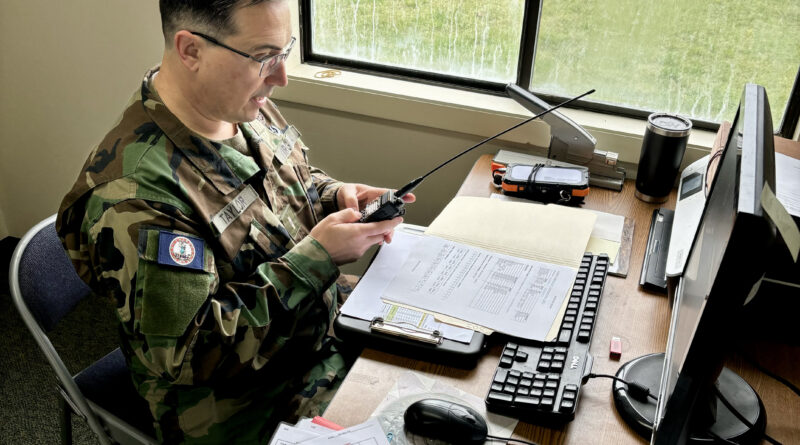VDF conducts statewide readiness exercise

RICHMOND, Va. — Members of Virginia Defense Force conducted a statewide readiness exercise May 4, 2024, at multiple locations across Virginia. Company-level command posts were established in Fairfax, Winchester, Warrenton, Lynchburg and Virignia Beach, and the VDF’s joint operations center was established in Richmond, and the exercise tested organic communications, access control and operations center augmentation support capabilities in a simulated severe weather scenario.
“The purpose of these exercises is to cultivate leadership and prepare our company grade officers and noncommissioned officers for potential real-world emergencies,” explained Col. (Va.) Richard Diddams, VDF Interim Commander. “The goal is to foster comprehension of the state active duty process and evaluate the efficacy of various missions outlined in the National Guard Civil Support Playbook in both a sustainable and secure manner.”
The Virginia National Guard employs the NGCS playbook to standardize mission packages across a spectrum of response capabilities and has been called to State Active Duty numerous times in support
of the commonwealth and Virginia National Guard.
“The exercise offers ample leadership opportunities for junior officers and noncommissioned officers,” explained Capt. (Va.) Michael Perini, the VDF’s deputy G3 training and operations officer and officer in charge of the exercise. “Witnessing them progress as leaders is a rewarding experience and it bodes well for the future of the VDF. I am excited about preliminary feedback received and subsequent alterations that we might make for iterations of this evolution.”
Col. Christopher Dunn, the Virginia National Guard J3 director of joint operations, visited the VDF operations center to learn more about VDF capabilities.
“It was great to see firsthand how the Virginia Defense Force trains to provide important capabilities to support the Virginia National Guard during domestic response operations,” Dunn said. “I think they have established a solid baseline for us to continue to improve, develop and align their training priorities with where they can help us the most.”
Perini explained the exercise consisted of a series of deployment, execution and re-deployment phases for selected units and teams tasks, along with maintaining situational awareness and documentation of all aspects of the total response effort. The VDF used a variety of communication and mission command systems include web-based common operating picture software and HF radio.
Playbook missions used during the exercise included access control, logistics distribution, operations center augmentation and public information.
Perini said a total of 30 scenario injects were successful managed between the company-level command posts and the VDF’s joint operations center.
The VDF is authorized by Title 44 of the Code of the Virginia as the all-volunteer reserve of the Virginia National Guard, and it serves as a force multiplier integrated into all Guard domestic operations. The VDF reports to the Adjutant General of Virginia as part of the Virginia Department of Military Affairs along with the Virginia Army National Guard and Virginia Air National Guard. Members of the VDF volunteer their time for training and are only paid when called to duty by an authorization from the Governor of Virginia.

